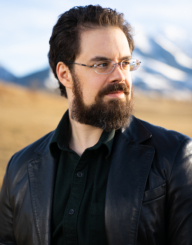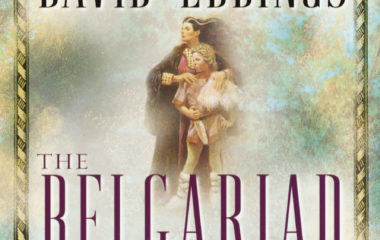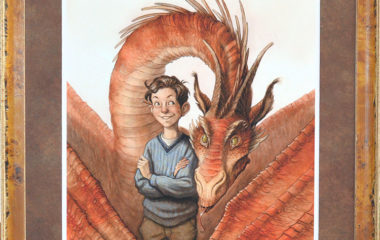It was also in her (Skadi’s) terms of settlement that the Æsir were to do something that she thought they would not be able to, that was to make her laugh. Then Loki did as follows: he tied a cord round the beard of a certain nanny-goat and the other end round his testicles, and they drew each other back and forth and both squealed loudly. Then Loki let himself drop into Skadi’s lap, and she laughed.
Can you guess where this piece comes from? The latest gross-out comedy movie? Jim Carrey does fantasy? . . . No? How about this one:

They moved down towards the frozen arch at great speed. Skarphedin jumped up as soon as he tied his shoe and had his axe raised. He ran to the river, but it was so deep that for a long stretch it was unfordable. A broad slab of ice, smooth as glass, had formed on the other side of the river, and Thrain and his men were standing in the middle of it. Skarphedin took off into the air and leaped across the river from one ice ledge to the other and made a steady landing and shot on in a glide. The ice slab was very smooth, and Skarphedin went along as fast a bird in flight.
Thrain was about to put on his helmet, but Skarphedin came at him first and swung his axe at him and hit him on his head and split it down to the jaw, so that the molars fell out on the ice. This happened in such rapid sequence that no one could land a blow on Skarphedin; he went gliding away at a furious speed. Tjorvi threw a shield in his way, but he hopped over it and kept his balance and glided to the end of the ice slab. Then Kari and the others came up to him.
“A manly attack, that!” said Kari.
Bad fantasy from someone who’s read too much Conan the Barbarian? The script to the next big action movie? A rip-off of Lord of the Rings?
Actually, none of those. The first excerpt is from Snorri Sturluson’s Edda, written in 1220 A.D, and the second from Njal’s Saga, written in 1280 A.D. As you can see, classical literature can be every bit as crude, bloody, exciting, and downright entertaining as anything you’ll find on TV or in the theater.
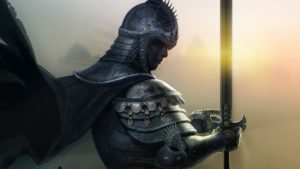
I grew up reading folklore, fairytales, and other mythological stories. The first fantasy book that I ever read was The Ruby Knight, by David Eddings, the second book of The Elenium. The Ruby Knight had everything that a boy could want: swordfights, monsters, magic, true love, and terrible villains.
From that moment onward, I was hooked on fantasy. I devoured the work of great authors, like Anne McCaffrey’s Dragonriders of Pern series,Magician, by Raymond E. Feist, The Wizard of Earthsea Trilogy, by Ursula K. Le Guin, the Redwall series, by Brian Jacques, Lord of the Rings,. by J. R. R. Tolkien, His Dark Materials, by Philip Pullman, and many, many more.
Eventually, I decided that I should try to expand my knowledge and read some classic fantasy. Thus I quickly chewed through—among others—the Gormenghast trilogy, by Mervyn Peake, The Worm Ouroboros, by E. R. Eddison, and The King of Elfland’s Daughter, by Lord Dunsany. Before I knew it, I had worked my way back to ancient Nordic and Germanic epics, where I made a shocking discovery: They’re fun to read!
Yes, stuff written hundreds and even thousands of years ago is fun! And it’s better than any movie because the authors of those epics often did the very things they wrote about. Read the Seamus Heaney translation of Beowulf. It has the monster Grendel, a thrilling underwater fight, and an ancient dragon. Tolkien loved Beowulf so much, he based parts of The Hobbit on it. In fact, Gandalf is named after a Norse dwarf! If you find Beowulf too hard, try Eaters of the Dead by Michael Crichton, which retells the same story in a modern novel.
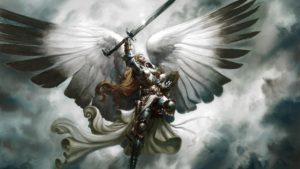
I loved the soaring adventure in those books, the way they could transport me into another world, where anything was possible. I dreamed about dropping out of school and grabbing a hatchet, a bow and arrow, and a backpack and just marching off into the mountains to find a quest of my own. I believed that life really was like a storybook and that when I grew up, I could do all the things I had read about.
And you know what? I was right.
Now that’s not to say that I go around fighting monsters. However, I have had an incredible series of adventures because of what I read growing up. I taught myself to make knives and swords—I even built a forge for myself—I climbed local mountains, and, eventually, I wrote my own story, Eragon, which has taken me all around the world.
And it all began with books!
Sources:
Snorri Sturluson. Edda. Everyman. Translated and edited by Anthony Faulkes.
Njal’s Saga. Penguin Classics. Translated and edited by Robert Cook.
© Christopher Paolini 2004, originally published in Guys Write for Guys Read, by Jon Scieszka

